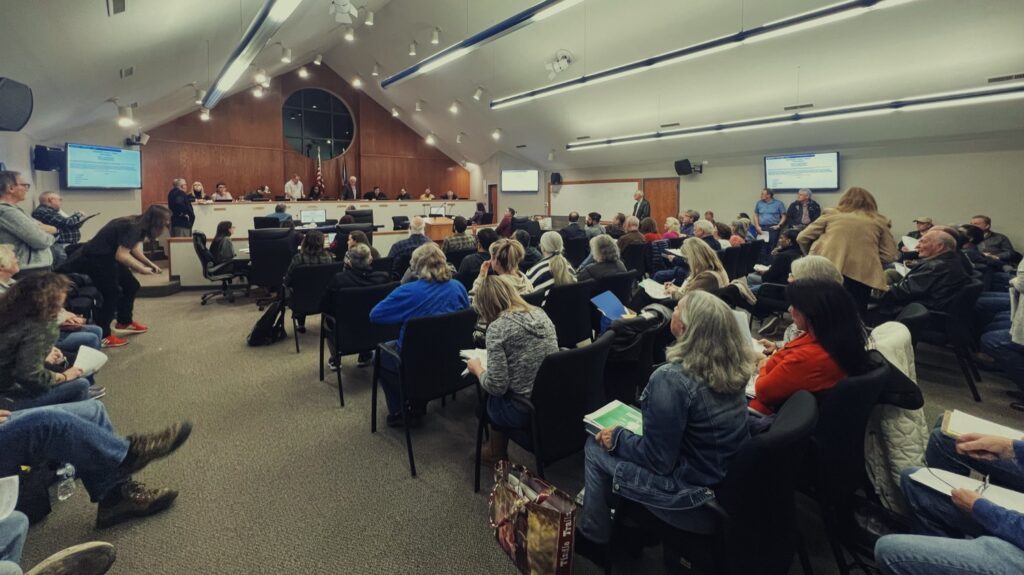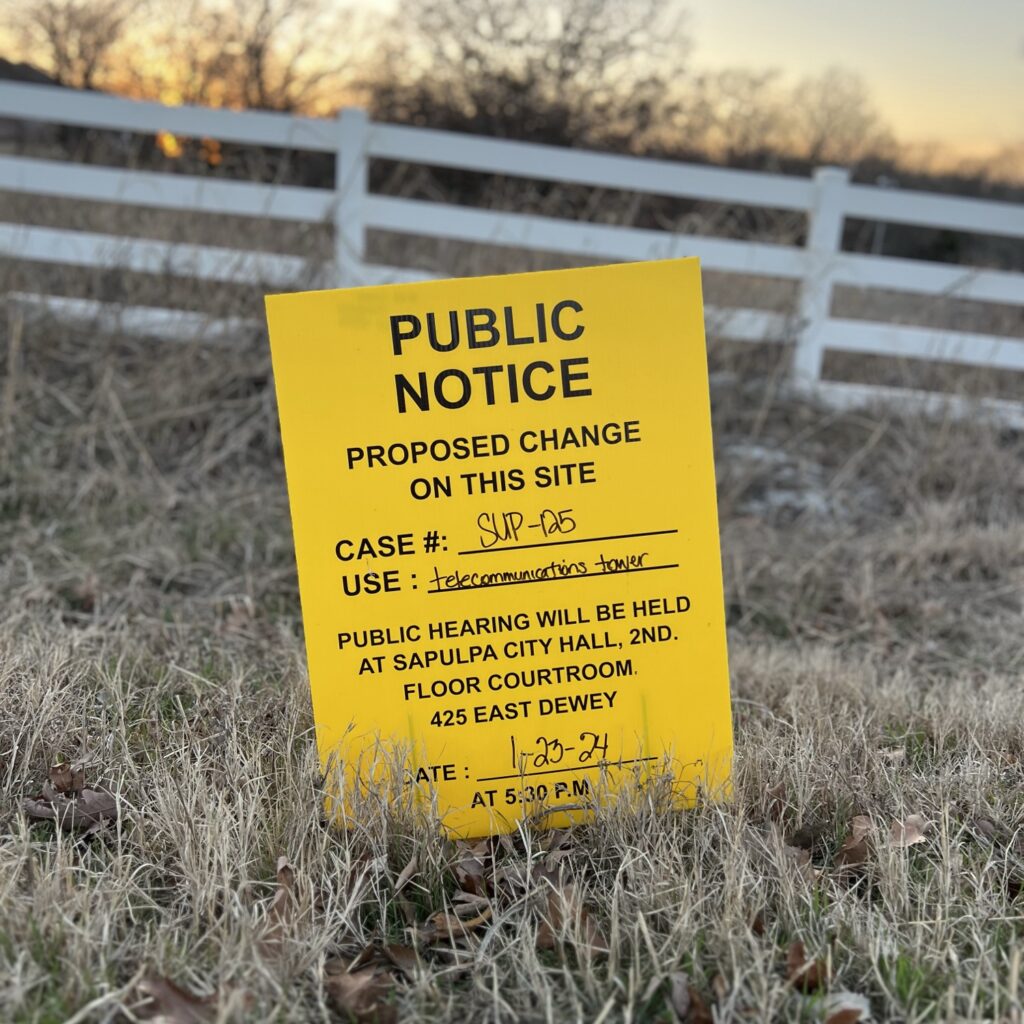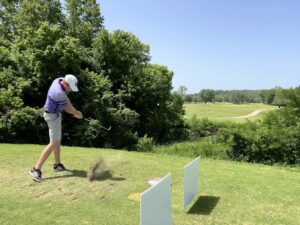By Caleb Wortz
Monday’s city council meeting began with a full, buzzing room and police officers blocking further attendees due to room occupancy. Controversy surrounding the proposed construction of a new 5G Verizon tower generated significant public interest.

Three pages of public commenters signed up to discuss and ask questions, causing the council to put some limitations on how many speakers came up. Sapulpa Mayor Craig Henderson explained that many of the comments would likely have overlapping concerns
“I want this to be a civil discussion,” said Mayor Henderson. “I expect some decorum in here, no shouting out and no shouting out at each other or other members of the audience.”
A representative from Verizon, Andy Rotenstreich, presented information on the proposed 5G monopole tower and the reasoning behind it. The tower would be 175 feet on an area of land at 11320 South 49th West Ave.

“The whole gist of this is to try and get improved coverage between (Hwy 117) to the south and the Creek Turnpike to the north,” said Rotenstreich. “All the new development of residences and travelers in that area where coverage is not as significant as it is in other parts of the city.”
Rotenstreich went into detail about various regulations, ordinances, and FCC, FAA, and State Historic Preservation Office regulations regarding approval of the proposed construction. Despite being near residential property, he explained it is within the ordinance distance for the height of the towner and its distance to those areas.
“Let’s keep in mind what we are doing here, we’re constructing a pole.” said Rotenstreich. “There’s no dust, no odor, no fumes, and no traffic, there’s not a less innocuous use of property that I can think of with regard to the health effects.”
He also mentioned a number of materials he had brought to the council containing information from the FDA and FCC regarding health issues and said they found no issues with health concerns.
Sapulpa City Attorney David Widdoes presented information regarding the possibility of denying the proposal despite it meeting regulations.
“If you have an application that meets all the zoning requirements that are presently in place, to deny it, the record needs to have substantial evidence,” said Widdoes. “Something more than mere generalizations.”
The council proceeded with 40 minutes of public comments, consisting primarily of concerns with health and the tower’s use of 5G and its potential impact on home value. One commenter presented a petition of homeowners near the proposed tower location which had 80 signatures who concurred they did not want the cell tower.
These concerns are what initially caused the planning commission to deny the proposal as well as the number of people in the two affected neighborhoods being against it. The connection between 5G and adverse health effects is traced to what is seen as a conspiracy theory
“Why are 1000s of peer-reviewed studies including a 16-year $30 million study showing a wide range of significant DNA damage, infertility, sperm damage being ignored by the FCC,” said Mrs. Goodman, a local resident.
The $30 million amount is likely in reference to a National Institute of Health study which found that high exposure to RFR, Radio Frequency Radiation, can cause increased DNA damage.
“To date, and after much research performed, no adverse health effect has been causally linked with exposure to wireless technologies,” says the World Health Organization.
In a document about 5G, the WHO explains that tissue heating is the main interaction between radiofrequency and the human body. They state that the temperature change in the human body from current technologies is not significant.
Multiple commenters also noted concerns that this tower and connected issues with 5G might have negative effects on property value. Cell phone towers in general may have a connection to decreased property values according to a National Institute for Science, Law and Public Policy (NISLAPP) study on neighborhood cell towers.
“The overwhelming majority of respondents, 94%, reported that cell towers and antennas in a neighborhood or on a building would impact interest in a property and the price they would be willing to pay for it,” according to the NISLAPP.
After a lengthy back and forth and concerns presented by a number of Sapulpans, the proposal went to vote; however, there was no motion, for or against, which resulted in the proposal dying out. When the result was read out the room erupted in applause and thanks directed at the councilmembers.










